“Make sure you watch out for Chiggers”.
“Chiggers”?
“Yep you can’t see them but if they get up your leg they’ll leave bites all over your groin, they’re nasty”.
“So how would I get rid if them?”
“You can’t. Well you could try taking a bath in bleach – that’s about the only thing that will kill them – oh and watch out for ticks too”.
“Ticks”?
“Yep, but make sure when you pull ’em out you get the heads. To be honest I never go in the forest in the summer – and if you’re cycling the mountain road be prepared to dive off into the grass – there’s lots of trucks up there and there’s no room to get past a bike”.
“So into the grass with the ticks and chiggers then?”
“Er, yep..”
We’re on route to Ellington, Missouri and we’re making slow progress. One great advantage of cycling the TransAm is everyone wants to talk to you. But boy does it slow you down. A five minute stop to buy some bread (we are now a mobile peanut butter and jelly sandwich making machine) ends up being a half hour conversation. If the bikes and panniers aren’t enough to prompt a conversation then as soon as people hear the British accent we are lost. Don’t get me wrong it’s lovely that people are so interested. But this morning we got up just after 6am and four hours later we haven’t even clocked our first mile. And there are sixty to do today.
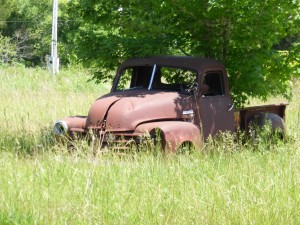
There’s always something interesting to see at the side of the road – this pick-up hadn’t been anywhere in a while!
We said our farewells to Louis and his wife and left Al’s place which had been superb – proper bunk rooms with mattresses, two showers and the cosy feel of an apartment. Ian had asked to cycle with us again today, but despite telling him when we were leaving he showed no sign of getting up, so we decided we had to move on. We breakfasted in a converted factory where we met Brian, a local man who had completed the TransAm a few years back and dreamed of doing it again with his wife once their children were grown. He was full of good advice and we were pleased to hear that in a few days we’d be through the worst of the Ozarks and the flatlands of Kansas would reveal themselves.
As we left the local garage, where we picked up supplies, the conversation took a familiar path: people are always anxious to tell us that the next stretch of road is the most dangerous they know. “You’re riding on route 3?”
“Yep”.
“Seriously? Well you better watch your butt, they’re not used to cyclists up there and there’s no hard shoulder – a girl got knocked off last year, broke her arm and no-one even stopped to help. Terrible”.
I still haven’t perfected the art of watching my butt, but I’m spending plenty of time watching Terry’s. If only Claudia Schiffer had accepted my invitation to join me. Oh well, perhaps the letter was lost in the post.
But the truth is, this idea that American roads are dangerous is completely at odds with our first hand experience. Yep it’s pretty scary when one of the big trucks thunders past, but the vast majority of drivers are far more courteous than in the UK, often holding back a hundred yards or more behind you, sometimes waiting for miles until they feel it safe to make a move. In some ways they are over-cautious, being so careful not to cross the centre line that you begin to think you are being stalked.
Today the “Horror Highway” over the Ozarks proves to be nothing of the sort, lots of ups and downs as can be expected, but the traffic is quiet and respectful. A few of the usual problems with dogs, but whether the chiggers and ticks have left us alone will not been known until a little later!
This is civil war country we are cycling through. Kentucky may have been neutral but Missouri was with the Union and the Confederates were keen to take the major city of St Louis. Often there us so much cycling to do that there is little time for sight-seeing, but we decide to stop at Pilot Knob, an area where the local mountains are rich in iron ore. During the civil was this was the scene of a major battle when the Confederates led an assault on Fort Davidson in an attempt to push through to St Louis.
Although the fort was eventually taken from the union if was a hollow victory as the south lost more than a thousand men in the assault and were held up long enough for the union to strengthen defences further north. The ruins of the fort still exist and a small museum and documentary tell the story.
We lunched in Centerville sitting out of the sun on the wall of the local park where we again met up with Louis who seems able to cycle the route and explore all the surrounding national parks as well. Extraordinary.
It proved another tough day of hill climbing and by the time we reached Ellington we were pretty exhausted and hungry, so the sight and sound of a local Mexican restaurant playing live music was too tempting, so pretty soon we were inside, Coronas in hand, feeling a little conspicuous in our cycling gear as we waited for a table. While waiting to be seated we met a couple heading west who had the same idea. If you can’t get spaghetti then Fahitas and Burritos could be the next best thing!
By the time we left the idea of two Englishmen cycling across the US had earned us minor celebrity status and we found ourselves having our photos taken with the owners daughter and other staff members, including. the cook! So thanks to the staff of Checo’s Mexican Restaurant on North 2nd Street who treated us so well.
Sadly our search for accommodation was not as successful as that for food and we spent the night in a local park, laying our sleeping bags in a shelter and sleeping on the concrete floor.
By the way, if you think today’s feature photo looks a little blurry, then you’re right. The searing heat, crippling gradients and sweat running into your eyes make taking a photo cycling up hill rather tricky. But it sort of captures how the Ozarks make you feel.
Miles today 62
Miles since First Landing 1377

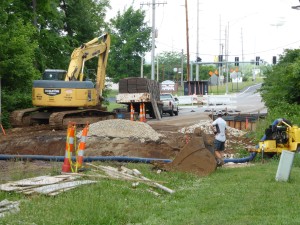
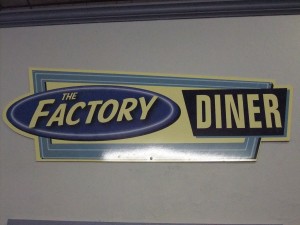
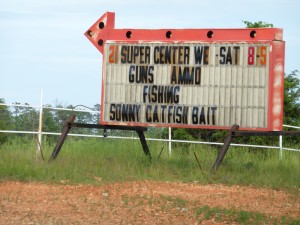
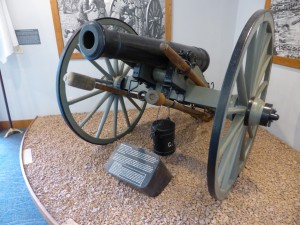
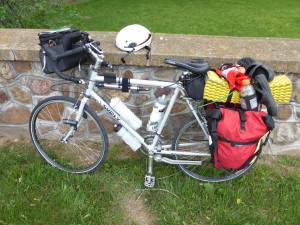
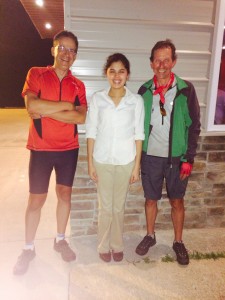
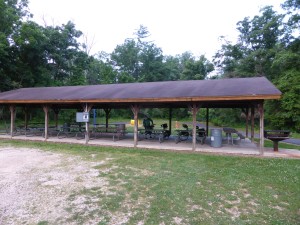
Lucky Burritos and Fajitas were all you got walking in there in your budgie smugglers!